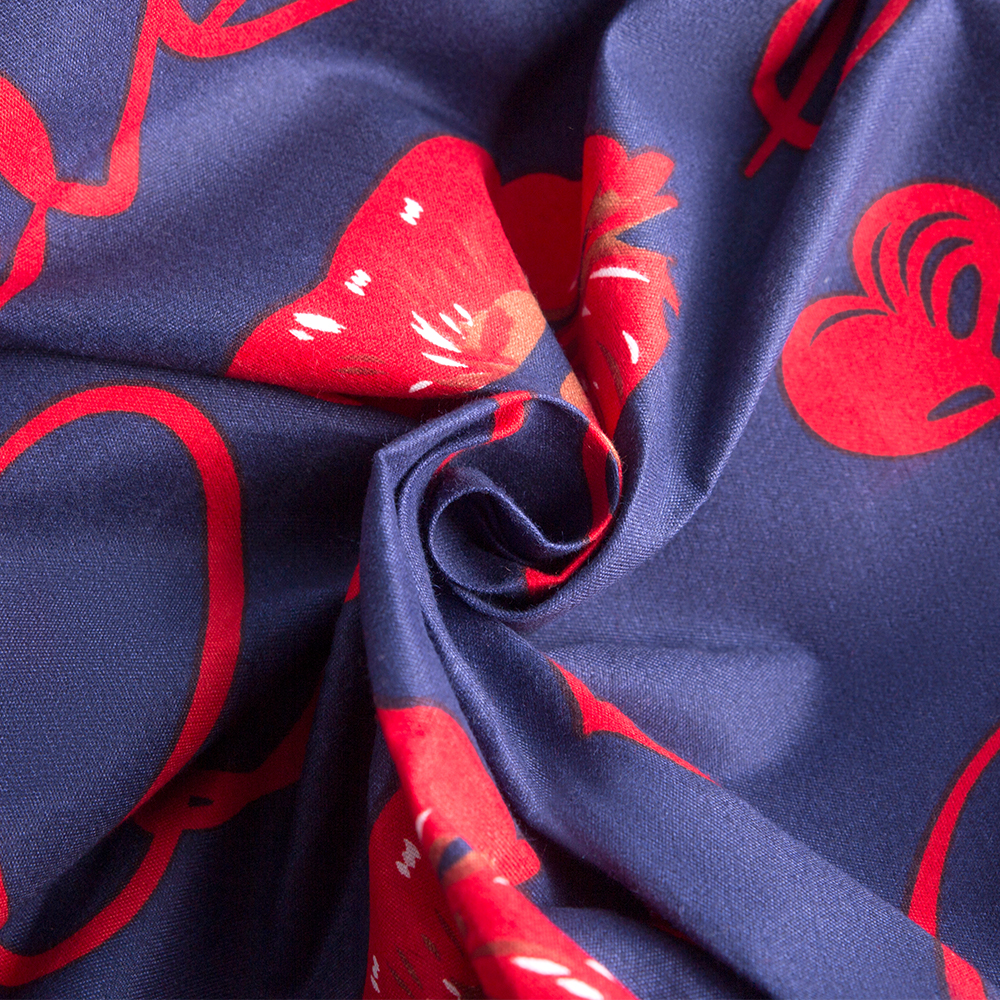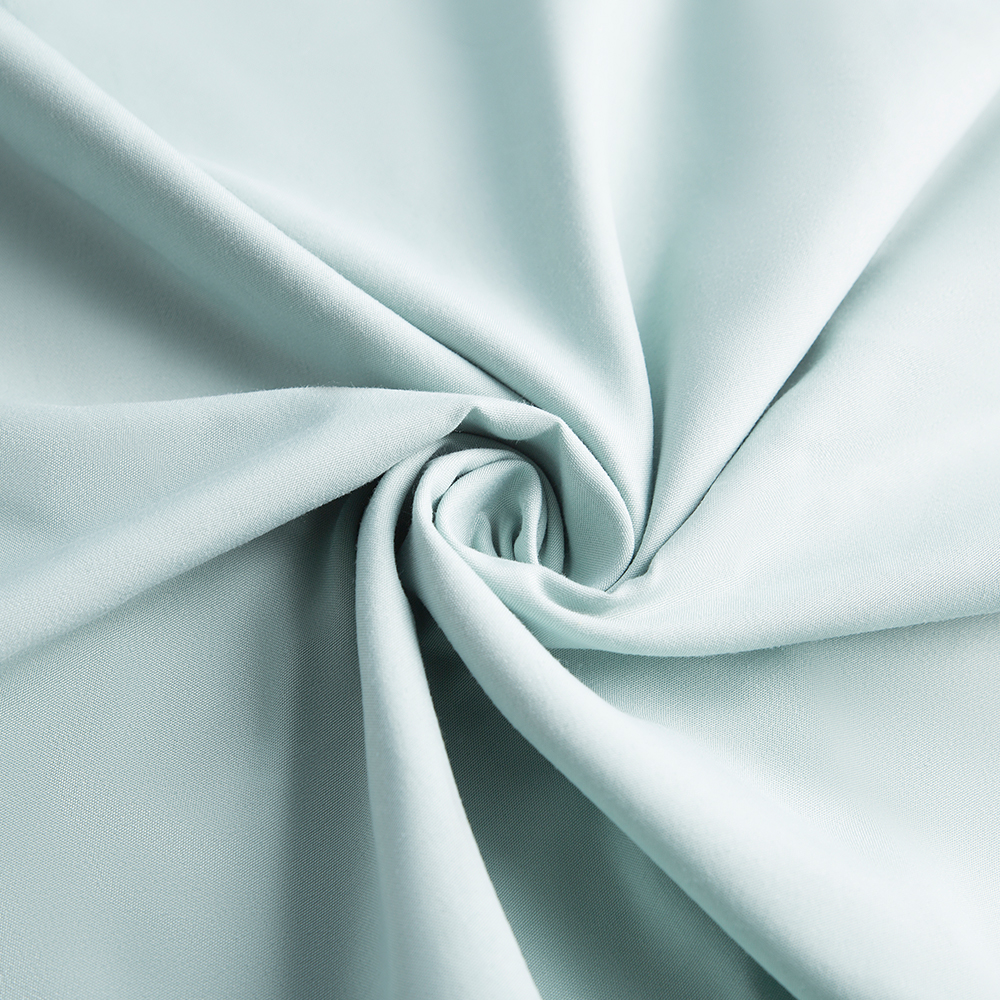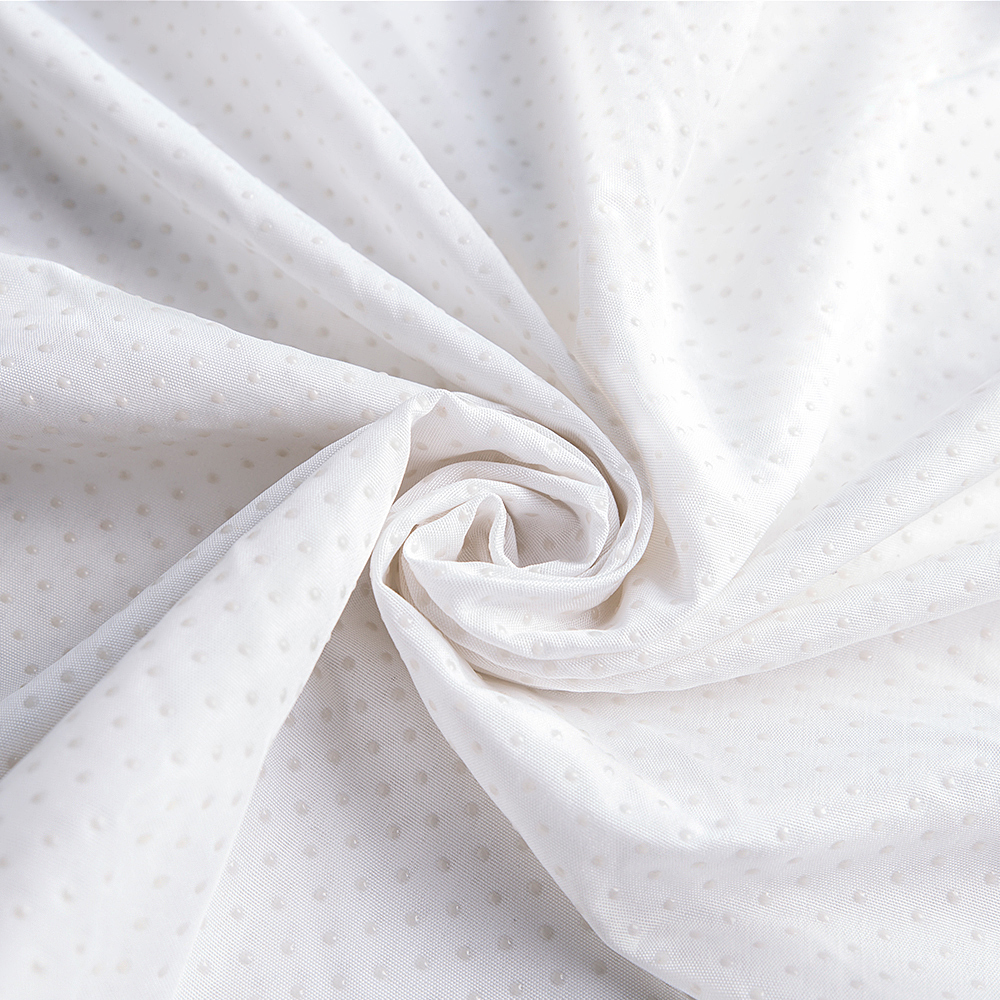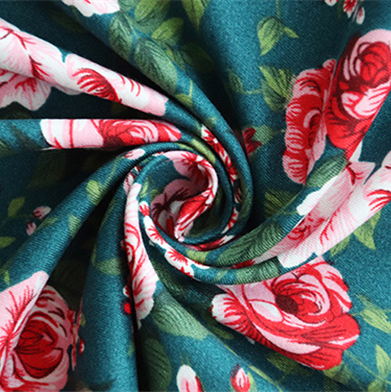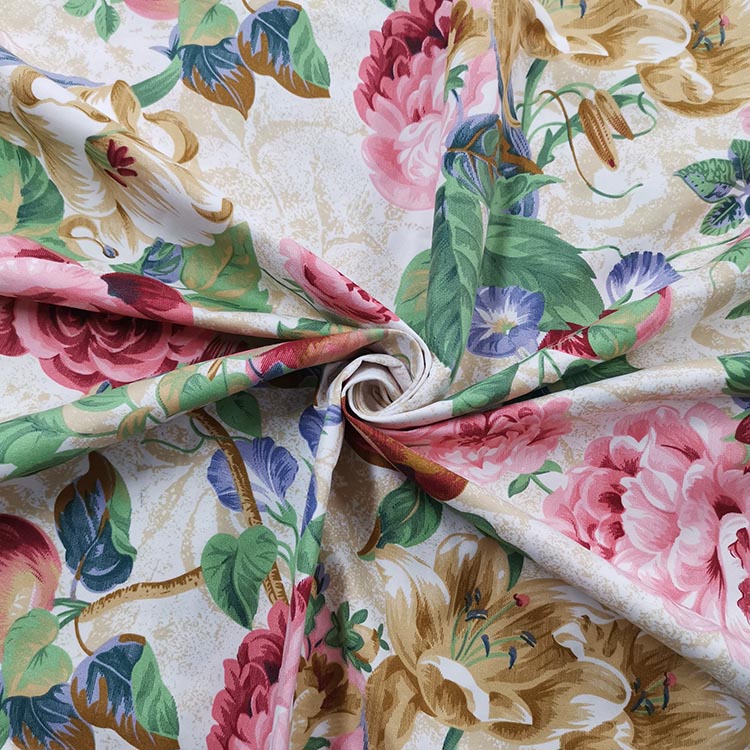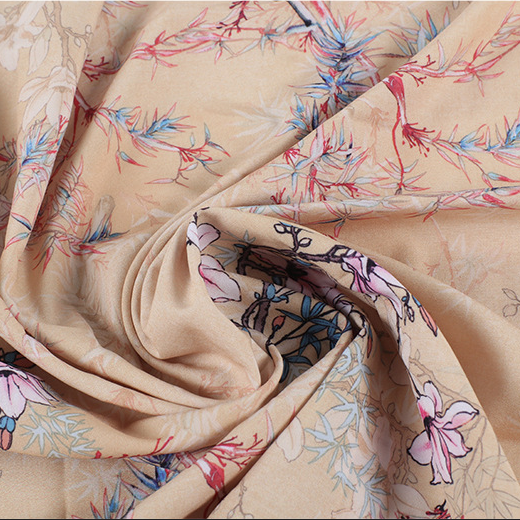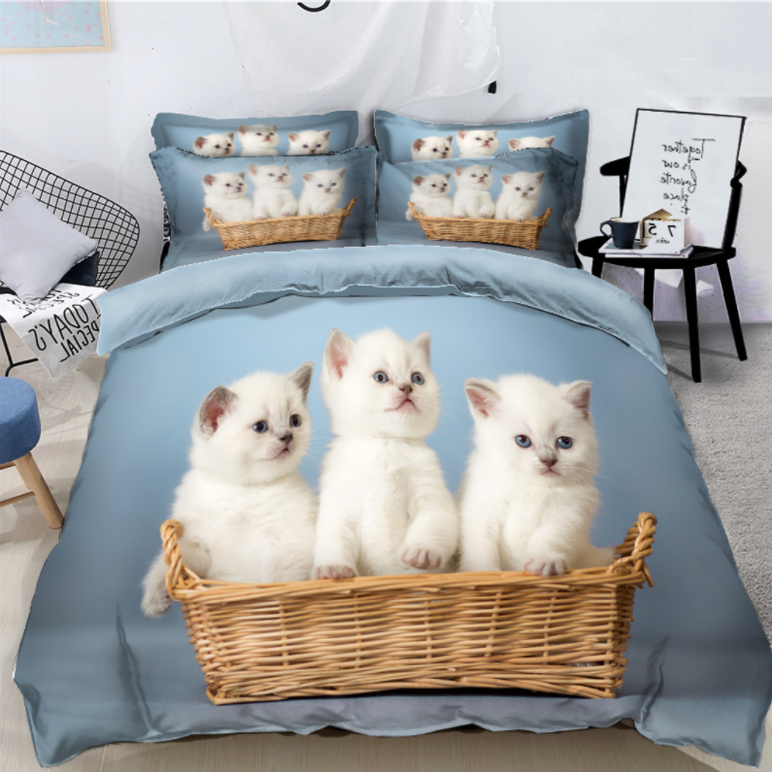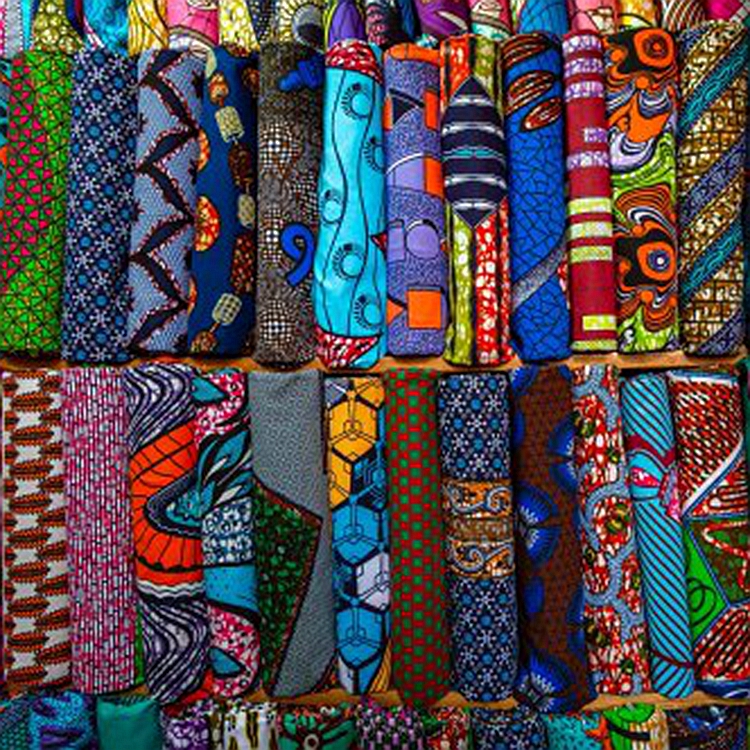Polyester microfiber solid dyed fabric has become increasingly popular in both apparel and home textile markets due to its unique combination of comfort, durability, and aesthetic appeal. Among its many functional qualities, moisture management and breathability are particularly significant, especially in activewear, sportswear, and bedding applications. Understanding how polyester microfiber solid dyed fabric performs in these areas is crucial for designers, manufacturers, and consumers who prioritize comfort, performance, and hygiene.
1. Understanding Polyester Microfiber Solid Dyed Fabric
Before discussing moisture-wicking and breathability, it’s essential to understand the fabric itself.
- Polyester Microfiber: Polyester fibers are synthetic polymers known for strength, durability, and resistance to stretching or shrinking. When processed into microfibers—extremely fine fibers typically less than 1 denier—polyester achieves enhanced softness and surface area, which improves comfort and functional properties.
- Solid Dyed: Solid dyed fabrics are uniformly colored through a dyeing process that penetrates the fiber, providing consistent, long-lasting color. This ensures aesthetic quality while maintaining the inherent properties of the polyester microfiber.
The combination of microfiber structure and synthetic polymer characteristics gives this fabric its high-performance attributes, including moisture management, breathability, and quick-drying capabilities.
2. The Science of Moisture Wicking in Polyester Microfiber Fabric
Moisture wicking is the fabric’s ability to pull sweat away from the skin to the outer surface, where it can evaporate more efficiently. Polyester microfiber fabric excels in moisture-wicking due to several key factors:
a. Fiber Diameter and Surface Area
- Microfibers have extremely fine diameters, which increases the surface area of the fabric.
- This high surface area allows the fabric to absorb and spread moisture across a larger area, facilitating faster evaporation.
b. Capillary Action
- Polyester fibers are structured to create capillary channels, allowing sweat to move along the fiber surface from the skin to the fabric’s outer layer.
- This process keeps the skin dry, reducing discomfort and friction during physical activities.
c. Hydrophobic Nature of Polyester
- Unlike natural fibers such as cotton, which absorb water and become saturated, polyester is inherently hydrophobic, meaning it repels water internally.
- This property forces moisture to travel along the fiber surface rather than soaking into the fabric, enhancing wicking efficiency.
d. Fabric Construction
- Woven or knitted polyester microfiber fabrics can be engineered to optimize moisture transport. For instance, knit structures allow greater airflow and stretch, improving wicking during movement.
- Fabrics with textured surfaces or specialized finishes further enhance sweat dispersion and evaporation.
Overall, polyester microfiber solid dyed fabric provides a dry, comfortable experience during both low-intensity and high-intensity activities.
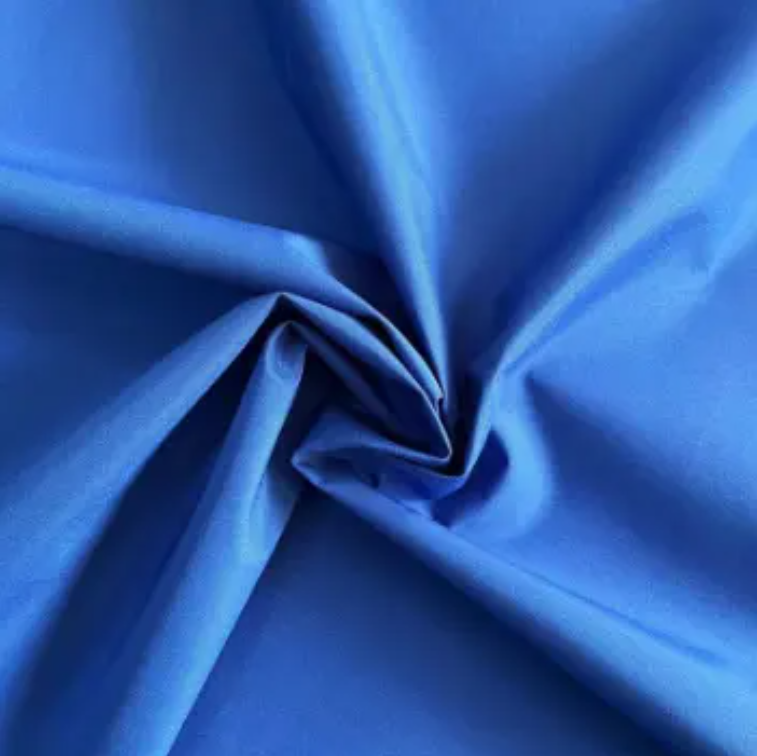
3. Breathability of Polyester Microfiber Fabric
Breathability refers to the fabric’s ability to allow air to pass through, facilitating heat and moisture exchange between the body and the environment. Polyester microfiber achieves excellent breathability through the following mechanisms:
a. Fiber Fineness
- The fine diameter of microfibers creates tiny interstitial spaces within the fabric structure.
- These spaces allow air to circulate freely while maintaining a lightweight and soft texture.
b. Fabric Porosity
- Depending on whether the fabric is woven, knitted, or nonwoven, the porosity can be adjusted to optimize airflow.
- Knitted microfiber fabrics, often used in sportswear, are more breathable than tightly woven fabrics, allowing body heat and moisture to escape.
c. Moisture Evaporation and Thermal Regulation
- Breathable fabrics work in tandem with wicking properties. By moving sweat away from the skin, they reduce moisture accumulation, which can trap heat and cause discomfort.
- This dual action of wicking and breathability helps regulate body temperature during physical activity or in warm environments.
d. Lightweight and Flexible Structure
- Polyester microfibers create a lightweight, flexible fabric that conforms to the body without restricting airflow.
- Unlike thicker natural fabrics, microfiber does not cling or create layers that trap heat and moisture.
4. Advantages Over Other Fabrics
Polyester microfiber solid dyed fabric offers distinct advantages in moisture management and breathability compared to other common fabrics:
| Fabric Type | Moisture Wicking | Breathability | Key Benefits |
| Cotton | Low–Moderate | Moderate | Absorbs sweat but retains it, slower drying |
| Nylon | Moderate | Moderate | Lighter than cotton, decent wicking |
| Polyester Microfiber | High | High | Dries quickly, moves moisture effectively, maintains comfort |
| Blended Fabrics (Polyester-Cotton) | Moderate-High | Moderate | Improved comfort but may retain some moisture |
The combination of high wicking, rapid drying, and breathability makes polyester microfiber fabric ideal for sportswear, activewear, and bedding applications where moisture control and comfort are critical.
5. Factors Affecting Moisture Wicking and Breathability
While polyester microfiber has inherent advantages, several factors can influence performance:
a. Yarn Count and Weave
- Finer yarns improve surface area for wicking, while specific weave structures enhance airflow.
- For instance, mesh-knit microfiber fabrics are more breathable than densely woven microfiber fabrics.
b. Finishing Treatments
- Some fabrics are treated with hydrophilic finishes to increase wicking efficiency.
- Anti-static or softening treatments can slightly reduce breathability if they coat the fibers heavily.
c. Fabric Thickness
- Thicker fabrics may trap heat despite effective wicking, reducing perceived breathability.
- Lightweight, thin microfiber fabrics are preferred for high-activity garments.
d. Environmental Conditions
- Humidity and temperature affect evaporation rates. High humidity may reduce the effectiveness of moisture wicking, though polyester still performs better than natural fibers under similar conditions.
6. Applications Highlighting Moisture Wicking and Breathability
Polyester microfiber solid dyed fabric’s moisture management and breathability make it suitable for a variety of applications:
a. Sportswear and Activewear
- Used in T-shirts, leggings, jackets, and workout gear.
- Helps athletes stay dry, cool, and comfortable during physical activity.
b. Outdoor Apparel
- Ideal for hiking, running, and cycling clothing where sweat evaporation and heat regulation are crucial.
- Often combined with stretch or breathable mesh panels for enhanced airflow.
c. Bedding and Home Textiles
- Microfiber sheets, pillowcases, and duvet covers benefit from breathability, keeping sleepers comfortable throughout the night.
- Wicks moisture from perspiration, preventing dampness and improving sleep quality.
d. Uniforms and Workwear
- Worn in industries requiring long hours of activity or exposure to warm environments.
- Moisture-wicking properties reduce discomfort and potential skin irritation.
7. Care and Maintenance Tips
Maintaining the fabric properly ensures long-lasting performance:
- Wash in Cold or Warm Water: Avoid high temperatures that can damage fibers or affect dye stability.
- Use Mild Detergents: Strong chemicals may reduce moisture-wicking efficiency.
- Avoid Fabric Softeners: Softeners can coat fibers and reduce breathability.
- Air Dry or Low Heat: High heat in dryers may warp microfiber and reduce surface area for wicking.
Proper care maintains moisture management and breathability over time, prolonging the functional and aesthetic qualities of the fabric.
8. Conclusion
Polyester microfiber solid dyed fabric excels in moisture wicking and breathability, making it a top choice for sportswear, activewear, bedding, and professional garments. Its fine fiber diameter, hydrophobic nature, and engineered structure allow it to pull sweat away from the skin, disperse it across the fabric surface, and promote rapid evaporation. Combined with a breathable construction, this fabric provides temperature regulation, comfort, and hygienic benefits that outperform many natural and blended fabrics.
Understanding the science behind moisture management and airflow, along with proper selection, finishing, and maintenance, ensures that polyester microfiber solid dyed fabrics deliver high performance, comfort, and durability across a wide range of applications.





 English
English
 中文简体
中文简体

